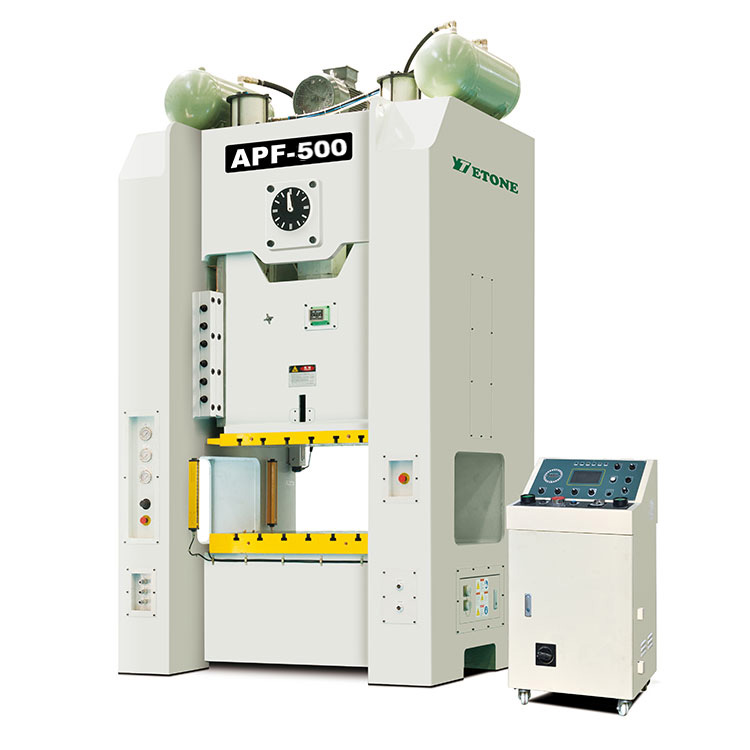The working cycle of a metal stamping machine refers to the time from the start of the stamping action to the completion of a complete stamping process. This cycle mainly depends on factors such as the type of stamping process, the design of the stamping machine, the stamping speed and the complexity of the workpiece. A standard working cycle usually includes the following stages:
1. Feeding stage
Time: The feeding time is usually short and is usually completed by an automatic feeding system (such as pneumatic, mechanical feeding device). The feeding system feeds the metal sheet or strip to the die area to ensure that the part is accurately positioned during the stamping process.
Influencing factors: The speed and accuracy of the feeding device directly affect the working cycle.
2. Die closing
Time: The slide descends and the die closes to clamp the metal sheet between the upper and lower dies. The time of this process is related to the pressing speed of the stamping machine, which is usually between tens of milliseconds and hundreds of milliseconds.
Influencing factors: The pressing speed of the stamping machine, the complexity of the die and the thickness of the material will affect the time of this stage.
3. Stamping process
Time: This is the actual stamping process, including shearing, punching, bending or stretching. The time of this stage is usually short, usually between tens of milliseconds and hundreds of milliseconds. The specific time of stamping depends on the complexity of the part and the performance of the stamping machine.
Influencing factors: the shape, thickness, mold design and hardness of the stamped part will affect the time of this stage.
4. Slide recovery
Time: After the stamping is completed, the slide will rise, separate the mold and complete a stamping. The speed of recovery is usually fast, usually between tens of milliseconds and hundreds of milliseconds.
Influencing factors: The recovery speed and the performance of the stamping machine have a greater impact on the time of this stage.
5. Pickup or delivery
Time: After stamping, the processed parts need to be taken out of the mold and prepared for the next round of production or packaging. This process can be done manually or by automated devices. The length of the pickup and delivery time will also affect the entire work cycle.
Influencing factors: The degree of automation and equipment efficiency are the main factors affecting the time of this stage.
Summary: The working cycle of a metal stamping machine includes feeding, mold closing, stamping, slide recovery, and pickup or delivery. The length of each stage depends on the performance of the equipment, the complexity of the workpiece and the degree of automation. On high-speed stamping machines, the entire cycle can be very short, reaching several hundred punches per minute.


